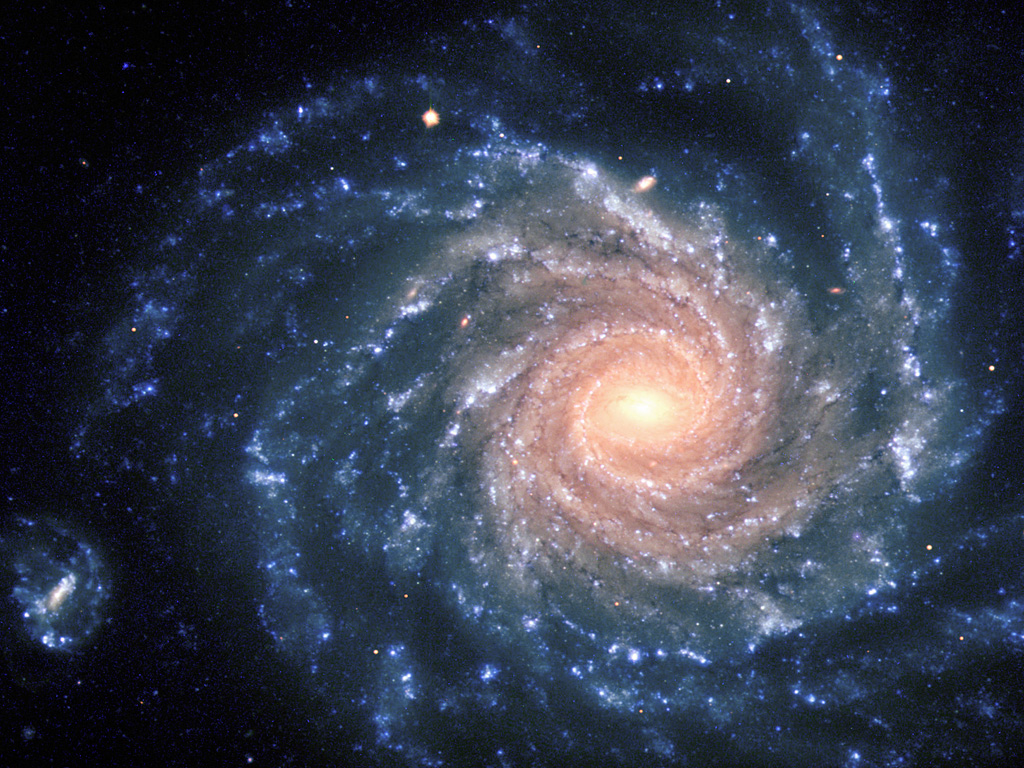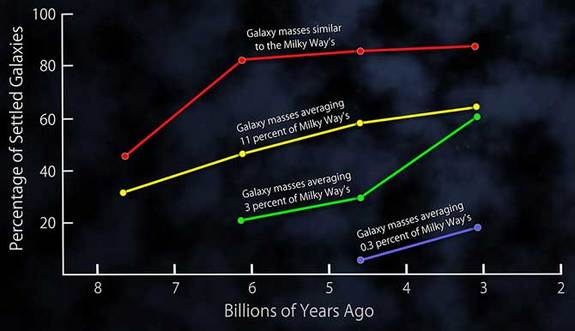Galaxy Evolution Discovery Surprises Scientists

Disk galaxies like our own Milky Way put the finishing touches on their stunning shapes relatively recently, a new study suggests.
The find will likely surprise many scientists, who had thought such galaxies had been static for more than half of the universe's 13.7-billion-year existence.
"Astronomers thought disk galaxies in the nearby universe had settled into their present form by about eight billion years ago, with little additional development since," lead author Susan Kassin, of NASA's Goddard Space Flight Center in Greenbelt, Md., said in a statement. "The trend we've observed instead shows the opposite — that galaxies were steadily changing over this time period."
Kassin and her colleagues used NASA's Hubble Space Telescope and the Keck Observatory in Hawaii to study 544 blue galaxies, whose color indicates that stars are forming within them. [Gallery: Amazing Hubble Photos]
They found that the most far-flung, ancient galaxies tend to be the most disordered, with organization steadily increasing as galaxies are observed closer and closer to the present day. Over time, the galaxies' rotation speeds increase, and they settle into proper, well-behaved disks.
The trend holds for galaxies of all masses, but the biggest systems are always the most highly organized, researchers said.
"Previous studies removed galaxies that did not look like the well-ordered rotating disks now common in the universe today," said co-author Benjamin Weiner of the University of Arizona. "By neglecting them, these studies examined only those rare galaxies in the distant universe that are well-behaved and concluded that galaxies didn't change."
Sign up for the Live Science daily newsletter now
Get the world’s most fascinating discoveries delivered straight to your inbox.
Several different factors could help explain how galaxies were able to become increasingly organized over the last eight billion years, researchers said. First of all, the number of galaxy mergers has dropped off sharply over this time span. And so have the rates of star formation and massive supernova explosions, which can also cause disruptions on a large scale.

Now that astronomers have observed the pattern, they can tweak their models of galaxy evolution until they're able to replicate the trend. Scientists may then be able to discern the physical processes responsible, researchers said.
The 544 blue galaxies were gleaned from the Deep Extragalactic Evolutionary Probe 2 (DEEP2) Redshift Survey, a project that uses Hubble and the twin 10-meter Keck telescopes in Hawaii. These galaxies are located between 2 billion and 8 billion light-years away from us and have masses ranging from 0.3 percent to 100 percent that of our own Milky Way galaxy.
The Milky Way likely went through roughly the same phases seen in the DEEP2 blue galaxy sample, finally settling into its current state about 4.5 billion years ago — about the same time our solar system was taking shape, researchers said.
The new study was published Saturday (Oct. 20) in The Astrophysical Journal.
This story was provided by SPACE.com, sister site to Livescience.com. Follow SPACE.com on Twitter @Spacedotcom. We're also on Facebook & Google+.











